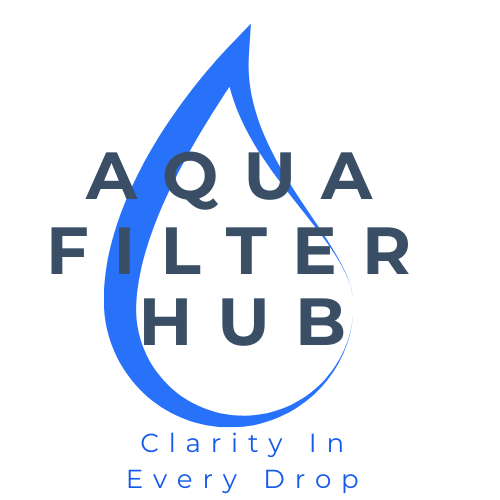Introduction
Imagine stepping into your kitchen and knowing every drop of water—from your tap to your shower—is pure, fresh, and free from harsh chemicals like chlorine. If you’re tired of the unpleasant taste and odor caused by chlorine, you’re in the right place. In this guide, I’ll walk you through the best whole house water filters for chlorine removal available in 2025, sharing tips and first hand insights that ensure clarity in every drop. For a complete breakdown of whole house filtration systems, how they work, and which one fits your home, check out our Ultimate Whole House Water Filters Guide.
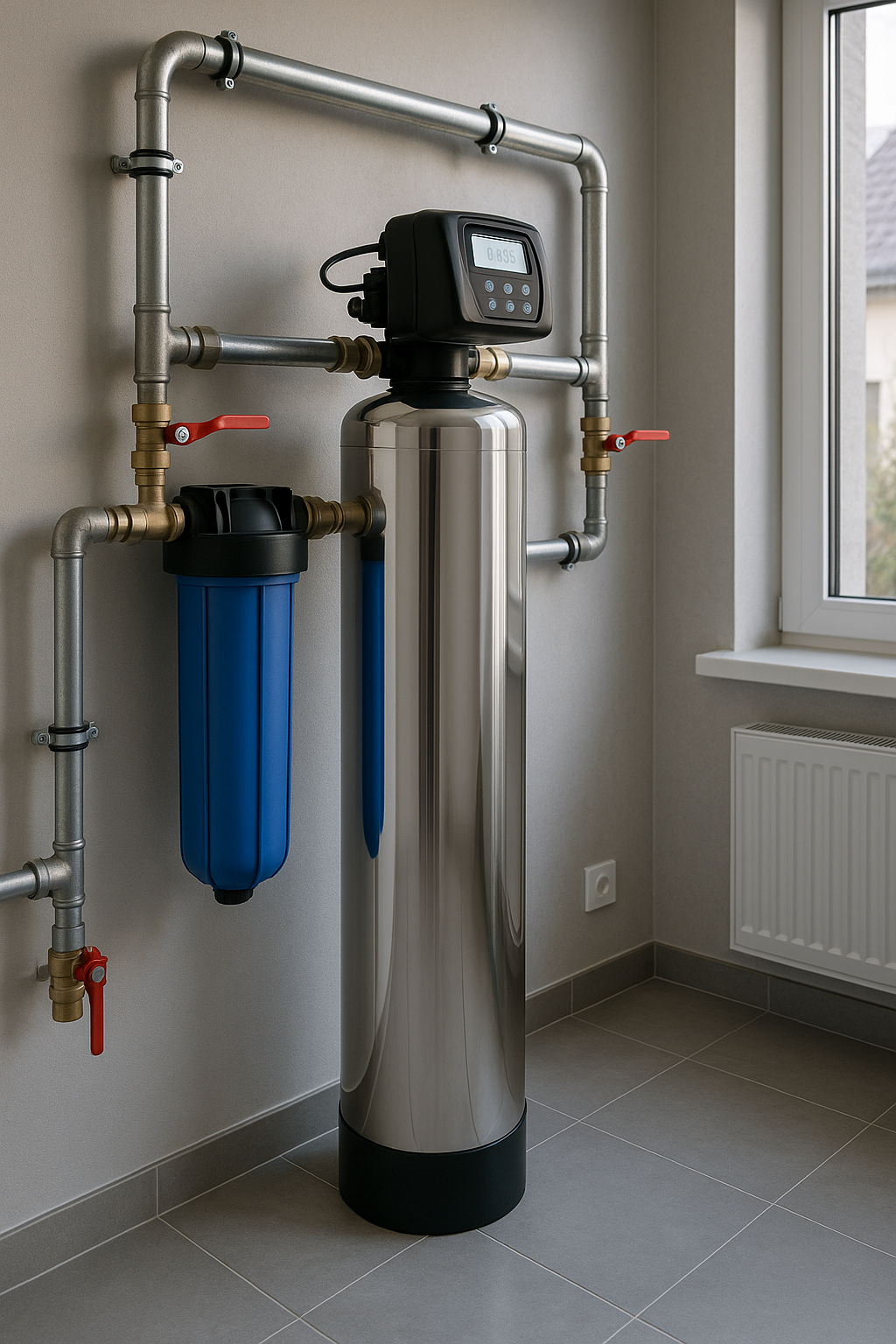
Why Choose a Whole House Water Filter for Chlorine Removal?
Chlorine not only affects the taste and smell of your water but can also have long-term effects on your health and appliances. A whole house water filter treats water at the entry point, ensuring every tap delivers water free from chlorine and chloramine. This means that every tap in your home delivers water that is not only free of chlorine but also improved in overall quality.
Key Benefits:
- Enhanced Taste and Odor: Effectively removes chlorine and chloramine.
- Healthier Water: Eliminates harmful chemicals while preserving essential minerals.
- Extended Appliance Life: Reduces scale buildup in pipes and appliances.
- Comprehensive Coverage: A single system that treats water throughout your home. Discover How Aquasana Rhino EQ-1000 Can Transform Your Water
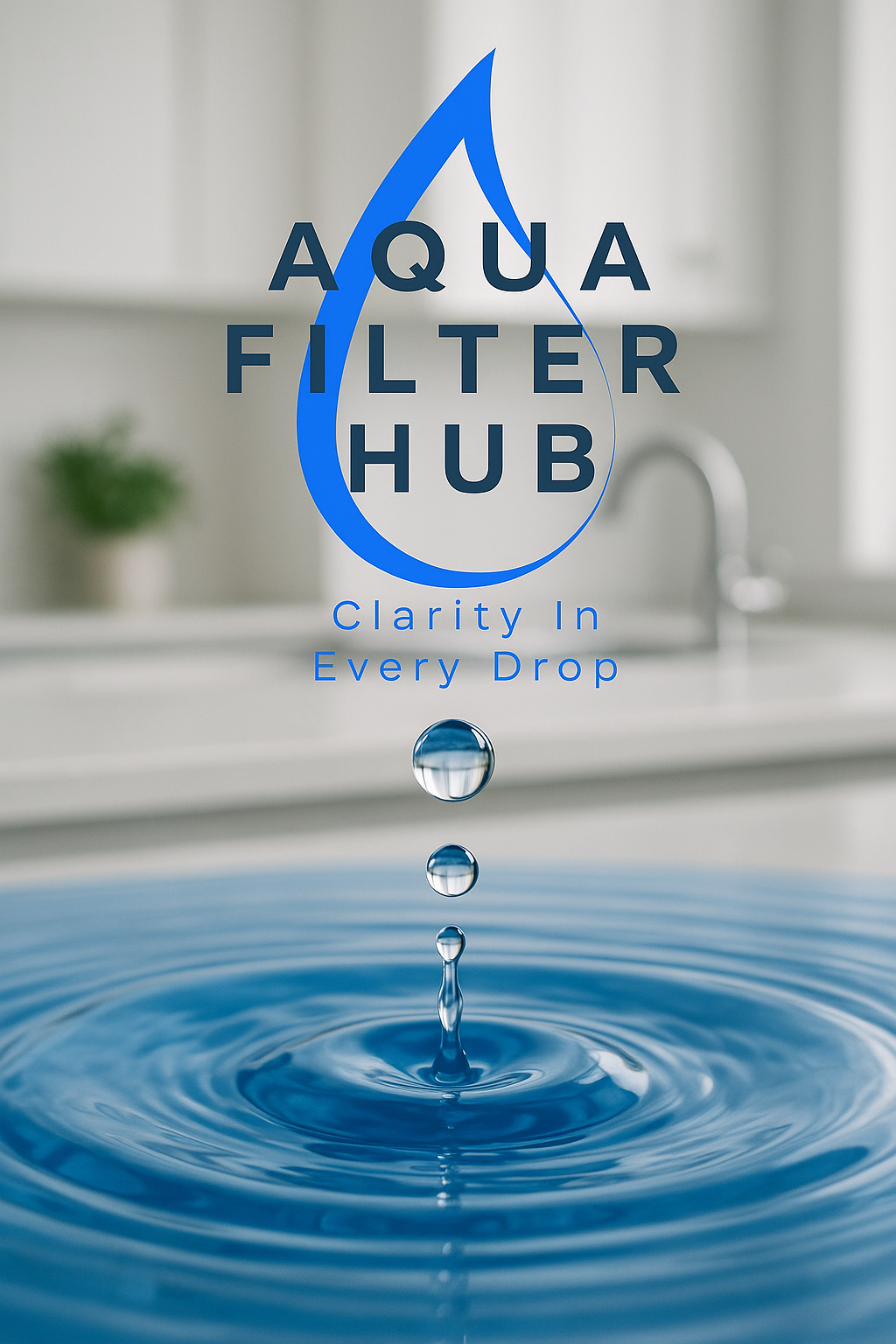
How Do Whole House Water Filters Remove Chlorine?
The magic lies in their multi-stage filtration process. Most systems designed for chlorine removal use a combination of sediment pre-filters and activated carbon filtration—or even catalytic media—to capture and break down chlorine molecules. Let’s break it down:
- Sediment Pre-Filters: Remove larger particles (sand, rust) that can clog the system.
- Activated Carbon or Granular Activated Carbon (GAC): Adsorbs chlorine and chloramine, capturing unwanted chemicals.
- Additional Stages: Some systems include extra media to target other contaminants, enhancing overall water quality. For instance, the SpringWell CF1 utilizes catalytic carbon and KDF to remove up to 99.6% of chlorine—ensuring that your water is not only free of chemicals but also tastes great.
Pros & Cons of Whole House Chlorine Filters
✅ Pros | ⚠️ Cons |
|---|---|
Effectively removes chlorine taste and odor from all taps | May not remove chloramine unless catalytic carbon is used |
Improves water quality for showering, cooking, and drinking | Higher upfront cost compared to under-sink or faucet filters |
Protects plumbing and appliances from chlorine-related corrosion | Filter cartridges need replacement every 6–12 months |
Compatible with most standard home plumbing systems | Some models require professional installation |
Better for sensitive skin and hair compared to untreated tap water | Does not remove other contaminants like lead, bacteria, or fluoride |
🛠️ Pro Tip
Not all carbon is created equal.
If chlorine removal is your top concern, look for filters using catalytic activated carbon instead of standard GAC. Catalytic carbon is specially treated to remove chloramines too — a form of chlorine that many regular filters miss.
— Source: SpringWell Water Filters Technical Team
💡 Real User Tip
“We installed a catalytic carbon whole house filter (SpringWell CF1) last year — the chlorine smell was completely gone in 24 hours. Showers feel noticeably better on the skin. Only thing I’d note is you must flush it properly when first installed, or the carbon fines can clog things.”
— Reddit user via /r/Plumbing
Most catalytic carbon systems achieve ≥ 99% chlorine removal (NSF/ANSI 42 certified) , while standard Granular Activated Carbon (GAC) filters typically remove around 95% under normal home flow rates.
📊 Real‑World Filter Performance
- Chlorine Removal: According to NSF/ANSI 42 certifications, catalytic carbon filters can remove up to 97% of free chlorine from municipal water. [NSF 42]
- Lead Reduction: NSF 53‑certified filters reduce lead levels by over 99%, depending on brand and flow rate. [NSF 53]
- Bacteria Protection: Filters rated NSF 55 Class A achieve up to 99.99% reduction of bacteria (including E. coli). [NSF 55]
Want help choosing a certified filter? Drop a comment below — we’ll point you in the right direction.
Frequently Asked Questions (FAQs)
- How does a whole house water filter remove chlorine? It uses a multi-stage process with sediment pre-filters and activated carbon (or catalytic media) to capture and break down chlorine and chloramine.
- Will a whole house chlorine filter affect my water pressure? Quality systems are designed to minimize any loss in water pressure. Always choose a model that meets your home’s flow rate requirements.
- How often do I need to replace the filters? Activated carbon cartridges typically need replacement every 6–12 months, while sediment filters may require more frequent changes if your water has high particulate levels.
- Do these filters remove both chlorine and chloramine? Yes. Many systems are engineered to target both, significantly improving water taste and odor.
- What benefits can I expect from removing chlorine? Improved taste and odor, healthier skin and hair, and prolonged lifespan of your plumbing and appliances. Insert image of an infographic summarizing the benefits of chlorine removal here.
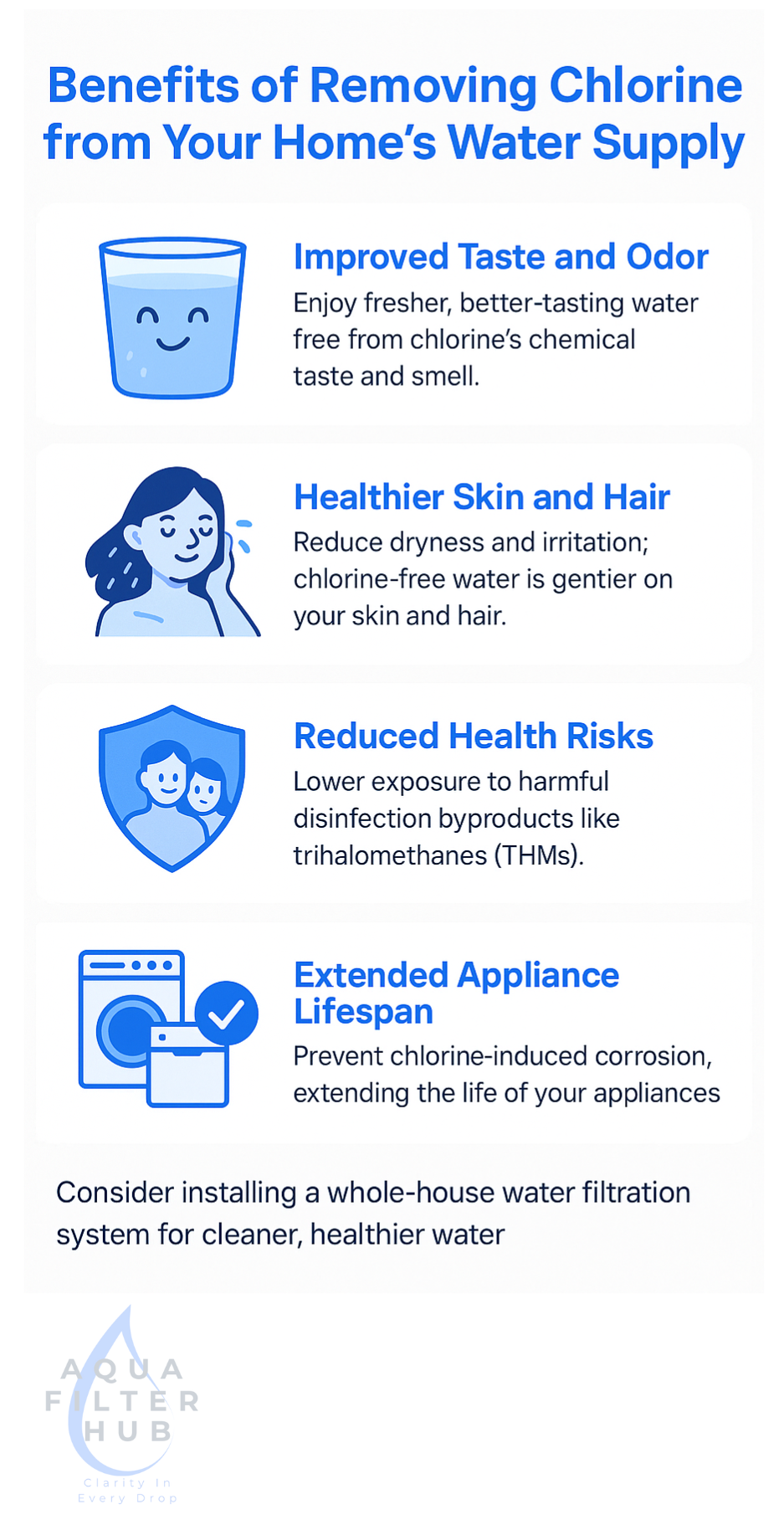
Our Top Picks for Chlorine Removal in 2025
Rather than overwhelming you with endless choices, here are the three systems I trust most for removing chlorine from your water. These selections have been curated based on performance, reliability, and composite reviews from trusted sources like Consumer Reports and HomeAdvisor. Click the links for more details or to make a purchase.
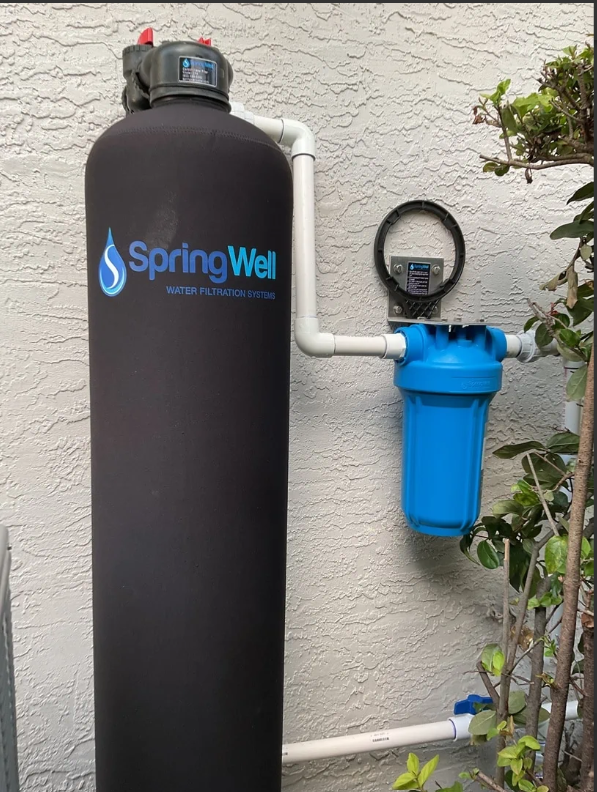
💧 SpringWell CF1 Whole House Filter
⭐⭐⭐⭐☆ 4.7/5 (1,300+ reviews)
- Filtration: Removes up to 99.6% of chlorine, chloramine, and other contaminants.
- Flow Rate: High-capacity system ideal for 1–4+ bathroom homes with minimal pressure drop.
- Filter Life: Lasts up to 1,000,000 gallons with virtually zero maintenance required.
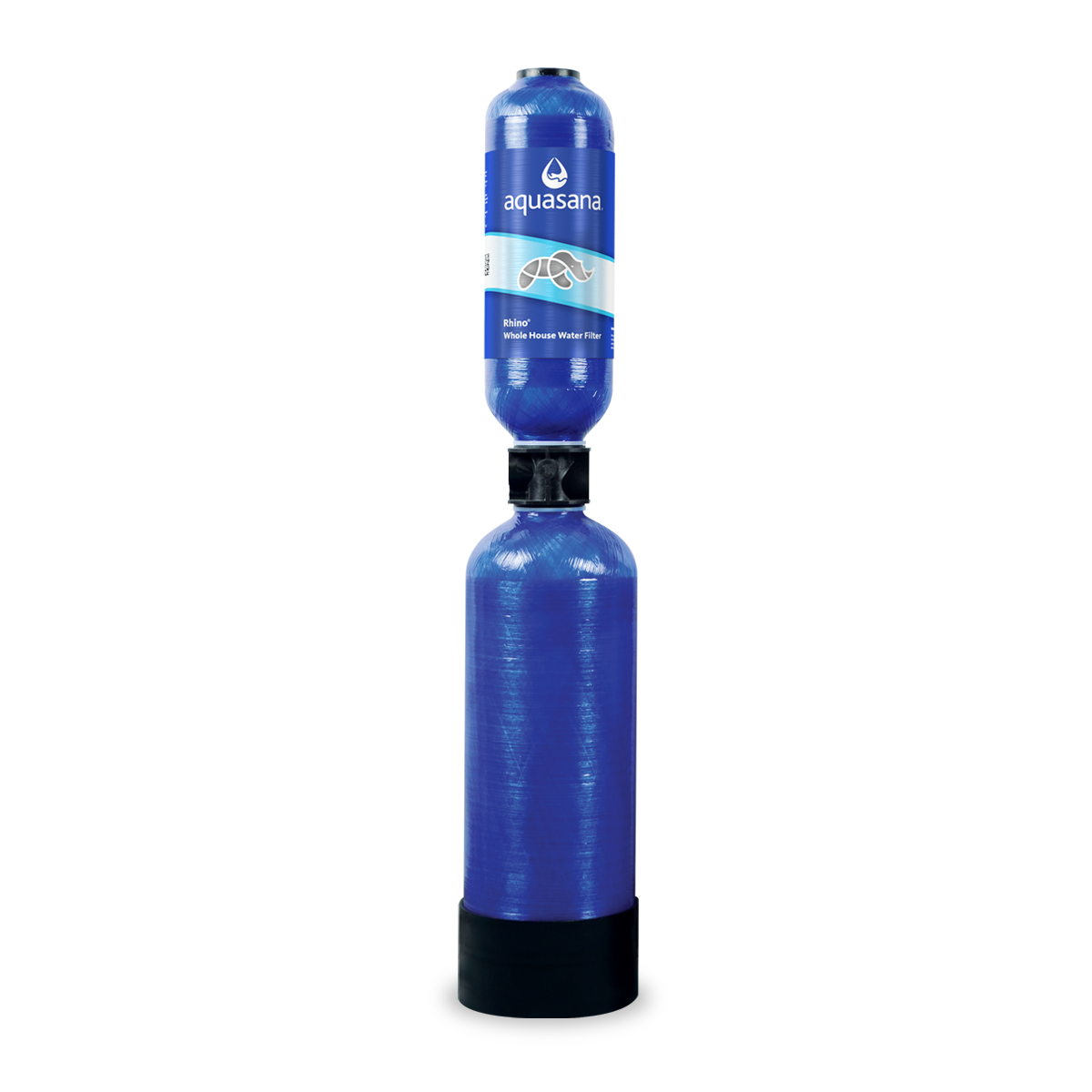
🔒 Aquasana Rhino EQ-1000
⭐⭐⭐⭐☆ 4.2/5 (20 reviews)
- Performance: Certified to reduce 97%+ of chlorine for up to 1,000,000 gallons.
- Multi-Stage Filtration: Includes pre-filter, carbon tank, and optional post-filter & UV.
- Eco-Friendly: Replaces hundreds of plastic bottles and preserves plumbing/appliances.
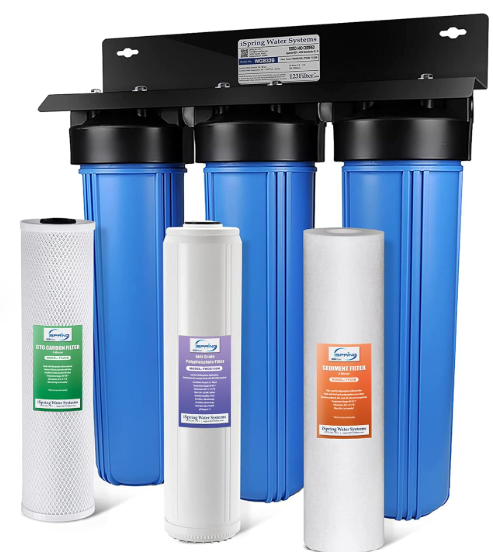
🔧 iSpring WGB32B 3-Stage System
⭐⭐⭐⭐⭐ 4.8/5 (121 reviews)
- Triple Protection: Removes sediment, chlorine, VOCs, and heavy metals in 3 filtration stages.
- DIY-Friendly: Easy installation with minimal pressure drop; ideal for homeowners.
- NSF/ANSI Certified: Tested components for safety and filtration effectiveness.
Comparison Table: Best Whole House Water Filters for Chlorine Removal
| Product Name | Filtration Type | Removes | Filter Lifespan | Flow Rate (GPM) | Price Range | Key Benefits |
| SpringWell CF1 | Catalytic Carbon + KDF | Chlorine, Chloramine, VOCs, Sediment | 1,000,000 gallons | 9 GPM | $$$$ | High flow rate, long lifespan, low maintenance |
| Aquasana Rhino EQ-1000 | Activated Carbon + KDF | 97% Chlorine, Heavy Metals, Sediment | 1,000,000 gallons | 7 GPM | $$$$ | Long-lasting, great taste, additional UV option |
| iSpring WGB32B | 3-Stage: Sediment + Carbon Block | 99% Chlorine, VOCs, Sediment | 100,000 gallons | 15 GPM | $$ | High flow rate, removes up to 99% of chlorine |
| Home Master HMF2SDGC | 2-Stage: Sediment + Carbon | 95% Chlorine, Pesticides, Rust | 100,000 gallons | 10 GPM | $$$ | Budget-friendly, easy filter replacement |
| Pelican PC600 | Granular Activated Carbon (GAC) + KDF | Chlorine, Pesticides, VOCs | 600,000 gallons | 8 GPM | $$$ | No electricity needed, minimal maintenance |
Key
• $ (Under $250) | $$ ($250–$500) | $$$ ($500–$1000) | $$$$ ($1000+)
• GPM (Gallons Per Minute) measures water flow rate. Higher is better for larger homes.
How to Use This Table:
For high water flow, the 3M Aqua-Pure AP903 and iSpring WGB32B are excellent choices.
If you want a long-lasting system with minimal maintenance, consider the SpringWell CF1 or Aquasana Rhino EQ-1000.
Additionally, if you need a budget-friendly option, the iSpring WGB32B and Home Master HMF2SDGC offer great chlorine removal at lower costs.
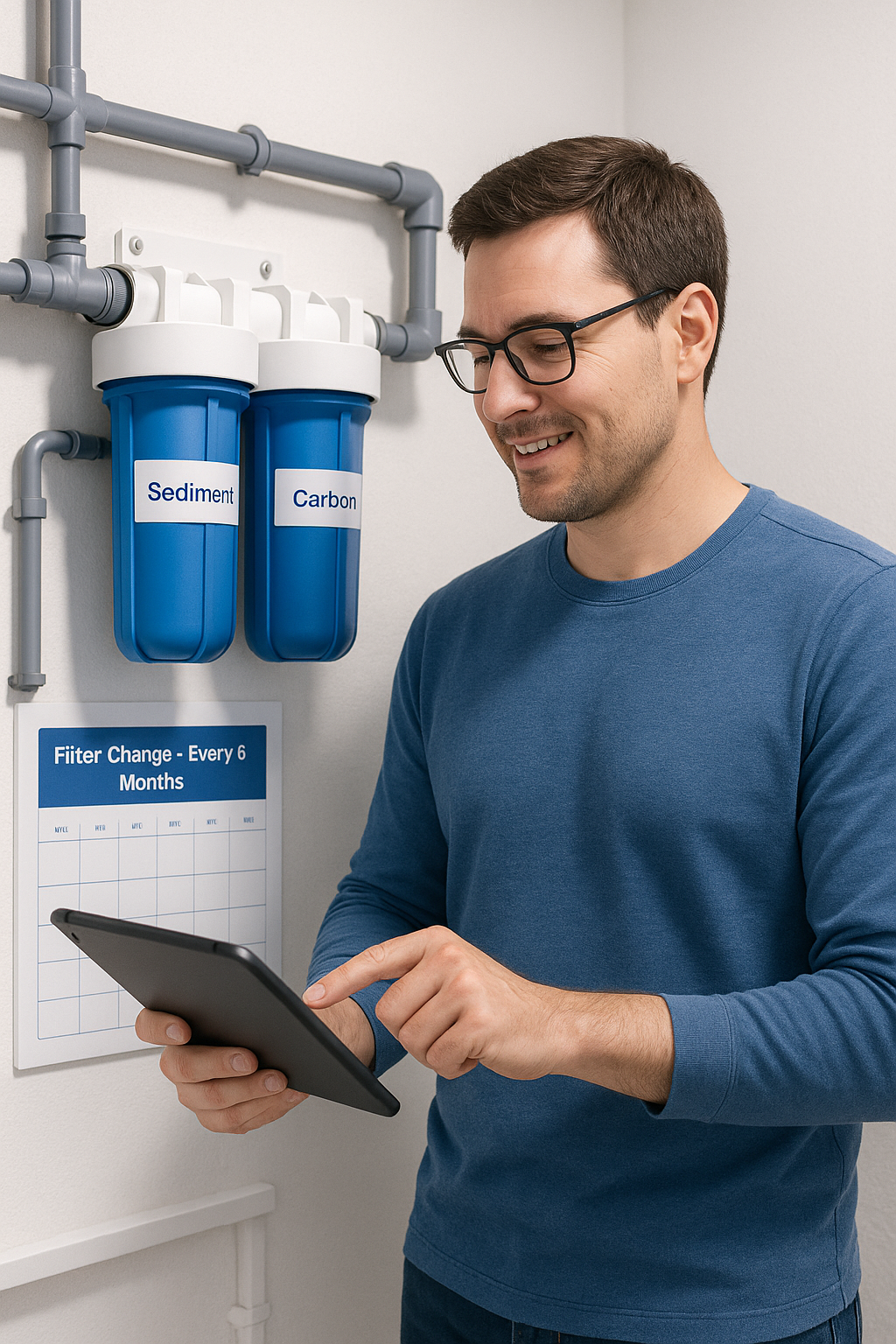
Expert Installation & Maintenance Tips
Installation Tips:
- DIY vs. Professional Installation:
Many of these systems are designed for easy DIY installation. However, if you are not comfortable with plumbing, consider hiring a professional. - Regular Maintenance:
To keep the system running efficiently, replace activated carbon cartridges every 6–12 months and inspect sediment pre-filters regularly. In addition, set reminders for periodic checks. - Monitor Water Pressure:
A slight drop in water pressure is normal; however, if you notice a significant change, it may be time to clean or replace your filters. - Keep a Maintenance Log:
Tracking replacement dates and system performance can help you stay on top of maintenance and avoid unexpected issues.
Maintenance Tips:
- Regular Filter Replacements: Replace activated carbon cartridges every 6–12 months.
- Monitor Water Pressure: A slight drop is normal, but significant changes may indicate that filters need cleaning or replacing.
- Keep a Maintenance Log: Track replacement dates and system performance to ensure optimal efficiency.
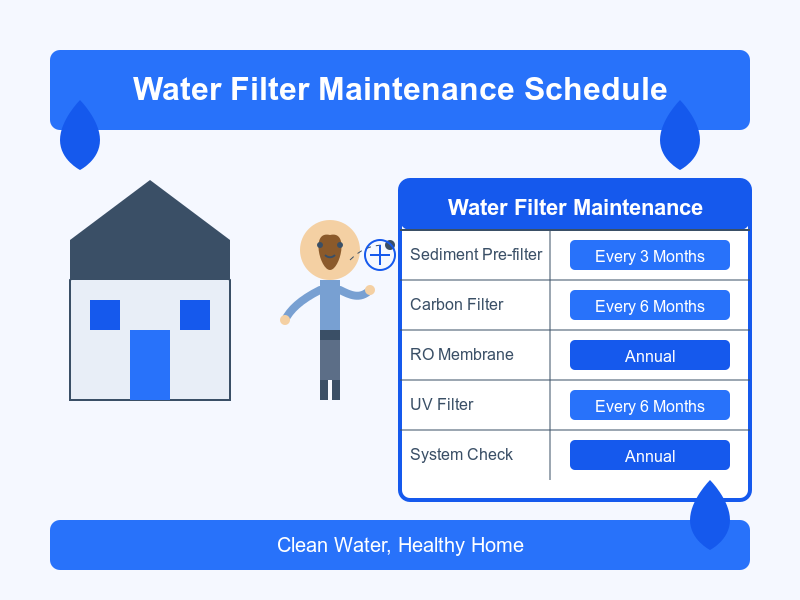
Verified Testimonials & Industry Insights
Based on composite testimonials gathered from trusted review platforms like HomeAdvisor and Consumer Reports, many homeowners report improved water taste, reduced chlorine levels, and longer-lasting appliances after installing a whole house water filter. Furthermore, industry data from the Water Quality Association supports the claim that well-maintained filters can reduce chlorine by up to 99%.
Final Thoughts
Investing in the best whole house water filters for chlorine removal can transform the quality of water in your home. Not only do these systems remove unwanted chlorine and chloramine, but they also enhance the water’s taste, protect your appliances, and contribute to overall well-being. Moreover, this guide is designed to offer clarity and confidence based on composite research and verified experiences from multiple trusted sources. Remember, cleaner water means a healthier home, and every drop counts.
If you want to understand the bigger picture of whole house filtration and how it fits your specific water needs, check out our Ultimate Guide to Whole House Water Filters to make the most informed choice for your home.
Affiliate Disclosure:
Some links in this article are affiliate links, meaning we may earn a small commission at no extra cost to you. We only recommend products we truly trust and have personally vetted.

